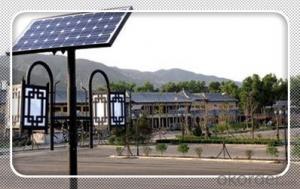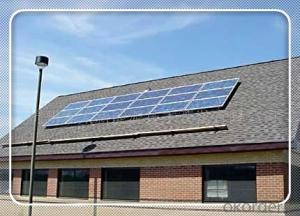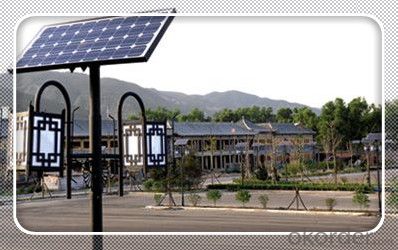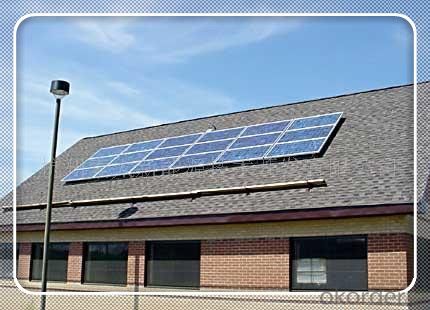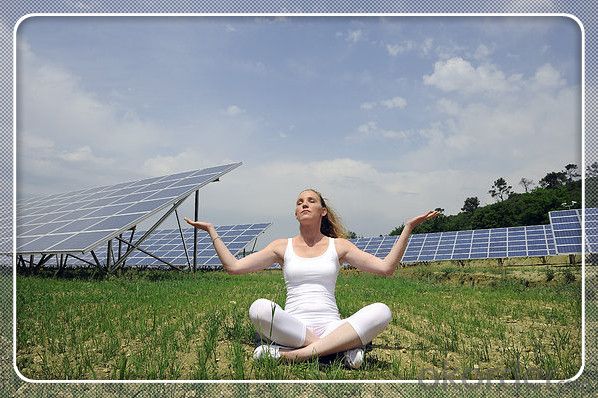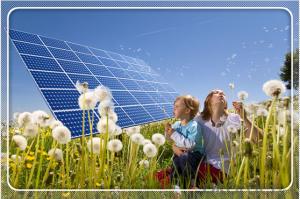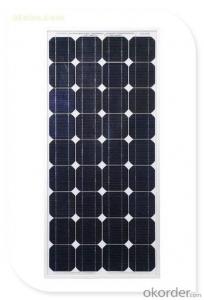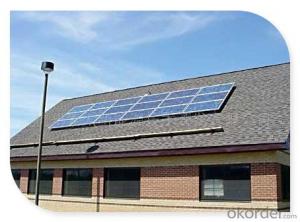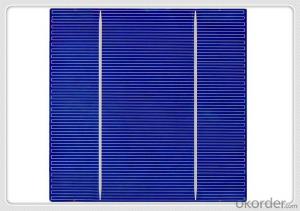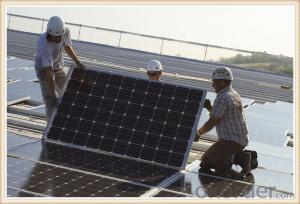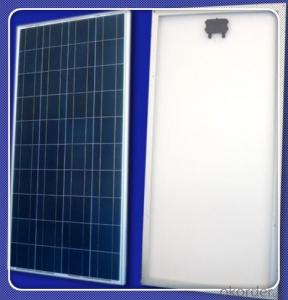50w Efficiency Photovoltaic Chinese Solar Panels for Sale 5-200w - Solar Panels New Orleans
- Loading Port:
- China main port
- Payment Terms:
- TT OR LC
- Min Order Qty:
- 10000 watt
- Supply Capability:
- 100000 watt/month
OKorder Service Pledge
OKorder Financial Service
You Might Also Like
Specification
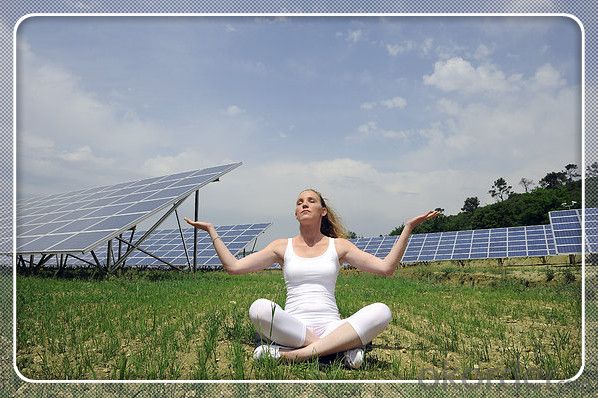
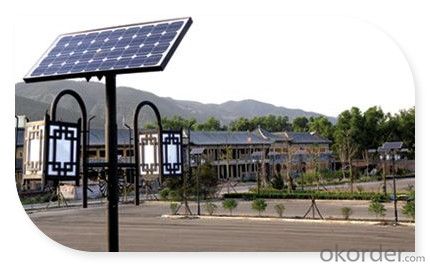
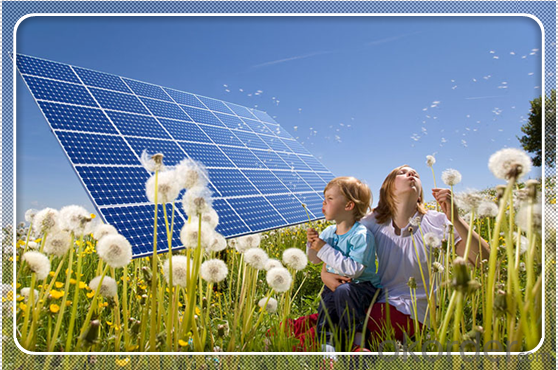
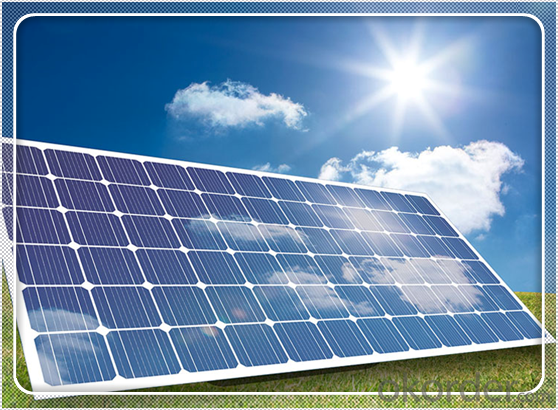
Solar Module Introduction
Solar Module is the core part of solar PV power systems, also is the highest value part of it. The function of Solar Module is to convert the sun's radiation to electrical energy, or transfer it to battery and store in it, or to drive the load running.
The Product has been widely used in space and ground, it mainly used for power generation systems, charging systems, road lighting and traffic signs areas. It could offer a wide range of power and voltage, and with high conversion efficiency, and long service life.
Solar modules use light energy (photons) from the sun to generate electricity through the photovoltaic effect. The majority of modules use wafer-based crystalline silicon cells or thin-film cells based on cadmium telluride or silicon. The structural (load carrying) member of a module can either be the top layer or the back layer. Cells must also be protected from mechanical damage and moisture. Most solar modules are rigid, but semi-flexible ones are available, based on thin-film cells. These early solar modules were first used in space in 1958.
Electrical connections are made in series to achieve a desired output voltage and/or in parallel to provide a desired current capability. The conducting wires that take the current off the modules may contain silver, copper or other non-magnetic conductive transition metals. The cells must be connected electrically to one another and to the rest of the system. Externally, popular terrestrial usage photovoltaic modules use MC3 (older) or MC4 connectors to facilitate easy weatherproof connections to the rest of the system.
Secification
Model Type | |
Peak Power-Pmax(W) | 5-200W |
Open Circuit Voltage-Voc(V) | 44.2 |
Maximum Power Voltage-Vmp(V) | 36 |
Short Circuit Current-Isc(A) | 5.4 |
Maximum Power Current-Imp(A) | 5 |
Maximum System Voltage | 1000V DC |
Maximum Series Fuse Rating | 10A |
Power Tolerance | -1~+3% |
Temperature Coefficients of Pmax | -0.45%/℃ |
Temperature Coefficients of Voc | -0.348%/℃ |
Temperature Coefficients of Isc | 0.031%/℃ |
Nominal Operating Cell Temperature | 44.5±2℃ |
Standard Testing Condition(STC) | Irradiance:1000W/m²;Temperature:25℃;AM=1.5 |
Qualification Test Parameters | |
Operating Temperature | -40℃~+85℃ |
Storage Temperature | -40℃~+85℃ |
Pressure Bearing | ≥5400Pascal/m² |
Wind Bearing | ≥5400Pascal/m² |
Mechanical Characteristics | |
Cell Size | Mono 125*125mm±0.5 |
No.of Cells | 72pcs(6*12) |
Dimension | 1580*808*40mm |
Weight | 15.5Kg |
Glass | 3.2mm High Transmission,Low Iron |
Frame | Anodized Aluminum Alloy |
Junction Box | IP65Rated |
Internal Diodes | 3 Bypass Diodes |
Cable | 1*4.0mm² Length 900mm |
Images
Packing & Shipping:
We have rich experience on how to pack the panels to make sure the safety on shipment when it arrives at the destination.
The normal size is packed by 25pcs/ carton / pallet. Paper carton for FCL shipping and wood carton for LCL shipping.
Warranty:
For c-Si panel: 25years output warranty for no less than 80% of performance, 10 years output warranty for no less than 90% of performance. Free from material and workmanship defects within 5 years.
For a-Si panel: 20 years output warranty for no less than 80% of performance, 10 years output warranty for no less than 90% of performance. Free from material and workmanship defects within 2 years.
FAQ:
(1)What price for each watt?
It depends on the quantity, delivery date and payment terms.
(2)What is your size for each module? Can you tell me the Parameter of your module?
We have different series of panels in different output, both c-Si and a-Si. Please take the specification sheet for your reference.
(3)Can you provide the peripheral products of the solar panels, such as the battery, controller, and inverter? If so, can you tell me how do they match each other?
Actually we are only manufacturer of solar panels, but we could try to source them for you in China if you need. We could provide you an optimal system design to instruct you how to install.
(4)Do you have the CE, TUV, UL Certification?
We’ve already passed all the tests, and any certificate is available.
(5)Have you ever sold your products to companies in my country?
Of course, we have customers in all general PV markets, but I think we should expand our market share along with the market growth.
(6)When did your company set up? You are a new company, how can I believe your quality?
We entered into Solar PV industry in 2005, now we have several plants in manufacturing of a-Si and c-Si panels, and our capacity is 220MW per year. Till now we have already passed all the tests by authorized laboratories, e.g. TUV, VDE, UL.
(7)Can you help us install the module if we cooperate with you?
We haven’t entered into installation sector, but we have the plan in near future.
(8) How do you pack your products?
We have rich experience on how to pack the panels to make sure the safety on shipment when it arrives at the destination.
(9) Can you do OEM for us?
Yes, we can.
(10)Can we visit your factory?
Surely, I will arrange the trip basing on your business schedule.
- Q: I am confused. I am planning to build a simple 2Watt solar system to power some lights in my house. . I wonder if it is possible to power up a 2Watt bulb using 2Watt solar power?2. Normally, when we are reading the power rating of a bulb, we will read the wattage, so what about the voltage and current rating?3. If the current is insufficient, will the bulb light up?I am having a solar panel that can output 2W power but I am not sure about the output voltage, how can I find out about the current? I am getting really confused.
- Hey, okorder
- Q: How do solar panels affect the overall energy security of a building?
- Solar panels can greatly enhance the overall energy security of a building. By harnessing the sun's energy, solar panels provide a reliable and sustainable source of electricity. This reduces a building's dependence on traditional energy sources, such as fossil fuels, which are finite and subject to price volatility or supply disruptions. Solar panels also contribute to grid resilience, as they can continue generating power even during power outages. Consequently, incorporating solar panels into a building's energy mix can enhance its energy security by diversifying its energy sources and promoting self-sufficiency.
- Q: Can solar panels be used to power a data center?
- Yes, solar panels can be used to power a data center. Solar panels convert sunlight into electricity, which can be used to power various devices and infrastructure, including data centers. By installing a sufficient number of solar panels and using energy storage systems, a data center can be powered entirely or partially by solar energy. This can help reduce reliance on traditional power sources, lower energy costs, and promote environmental sustainability. However, the feasibility and efficiency of using solar panels for powering a data center may depend on factors such as the location, size of the data center, and the availability of sunlight.
- Q: i have a small solar panel,the ones from a garden lamp that turns on at night-i think.what i was wondering is can i just connect the solar panel to a capacitor and then a light just to test?or do i need something to convert the solar energy to usable energy?and how do i tell if a capacitor is broken?
- To test a solar panel, connect a voltmeter, and turn on and off a light. If the voltage increases when the light above the panel is on, it is working. The solar panel does convert solar (light) energy into usable (electrical) energy. No extra conversion is necessary to make eletricity. You might, however, want to convert .5 VDC or 2 VDC output of solar panel(s) - or the batteries they charge - to 20 VAC with an inverter though. If a capacitor is broken, it will look like an electrical short circuit all the time.
- Q: Can solar panels be installed in shaded areas?
- Solar panels can be installed in shaded areas, but their efficiency and power output will be significantly reduced compared to panels installed in direct sunlight.
- Q: I have the wattage of solar panel but i dont know about the voltage amp; current rating of it. Plz explain me about the voltage rating of solar panel.
- The voltage rating and current rating are part of the specifications for the panel. You will have them listed on the spec sheet. The voltage number is usually the open circuit voltage of the panel, the voltage with no load. The current number is the short circuit current of the panel. In use, you need special electronics, called a Maximum Power Tracker (MPT) controller, which adjust the load to get the most power from the panel, and adjust the voltage output via a DC-DC converter to the optimal conditions to charge the attached battery. how to take batteries as per solar wattage ? sorry, don't understand this.
- Q: what parts and tool do i need to build and connect a solar electric panel to my home
- Dear Matadora, Very good, good, good step to change your home electric supply to solar cell, because in long run, solar cell is cheaper. First you have to consider Power need for your house, eg. 200W, then you go to sellers and choose one with lowest price but best quality. After that you should assemble/attach your solar panel in place that gets most Sunlight, most probably in your roof. Attach them tightly, avoid burglar. Original solar cell current is DC. Current from solar cell placed first in several car batteries, so you could use electricity in night either. After that if your home appliances use DC, you could directly connect your appliances to batteries. But if your appliances need AC, current should be converted first from DC to AC use DC to AC converter. Car battery used to have 2 Volt DC. So if you need 220VAC, after DC converted into AC, then passed through transformer to increase voltage. Thank you very much Matadora.
- Q: am having a 75 watts siemens solar panel and is giving me 2.89volts during bright light, i wanted to know can this be used to charge 00Am/hr battery?
- Many of the panels used on homes are designed to produce 2 volts DC. 0 of them wired in a series would produce 20 volts DC. An inverter is used to change the DC voltage to AC. The other aspect of electricity is amperage. With electrical units wired in series the voltage is added. When they are wired in parallel the amperage is added. The Volts x Amps produced will give you the wattage. A wise homeowner will examine their electric bills or the equipment used to determine their demand. They will consult tables that let them know how much sunlight their area receives each year as this will alter the rated performance of the panels. Then they will try and determine how much of the demand they want to fill. 80% may be economical. Then they also want to determine what they will do with excess electricity that may be produced during the summer months of intense sun and how they will supply the shortfall of low sun winter months. From all this they will determine the number of solar panels they need to purchase.
- Q: Since plants have been populating this earth for the past 475 million years I think they have evolved to gain the most sun with their greenery. If scientists used heat sensors to find the hot spots of trees and trim all of the leaves that don't quot;providefor the plant, then maybe that trimmed tree could be used to become a solar quot;panelquot;. I believe that each individual leaf could be replaced by a small solar panel and the wood of the tree would be wiring that would root all of the solar panels to a generator.
- solar panels do not use generators, but i like your idea, very creative.though i don't see the practicality of this being used commercially, i think it would make a great solar promotional piece though! off-subject, it is time we stop looking at the upfront costs of things and start looking at what the long term costs are. most green-technology, although expensive at first, end up saving tons of resources and actually increase profits of businesses! studies show that people who work in a green building tend to be happier which benefits health, more excited to go to work due to the business's environmental ethics, are more productive because of natural lighting, and are more efficient because more work is getting done. green buildings can actually boost the efficiency of a business! thus saving tons of money and reducing tons of waste. Doesn't this just make sense to you?
- Q: hi everyone..i wanna do my major project on solar panels...so anyone kindly tell me the projects based on solar panels..
- I have done this in my project too and a solar panel, two wires, a circuit/project board, an LED light/a small fan,a switch and a solderer. Just solder the wires to the positive and negative parts of the panel, put the wires connected to the panel to the board put the LED's on the other side and the switch together with it shine light on the panel and the light/fan will work.(If it dosen't work, please DO NOT consult ME.)
Send your message to us
50w Efficiency Photovoltaic Chinese Solar Panels for Sale 5-200w - Solar Panels New Orleans
- Loading Port:
- China main port
- Payment Terms:
- TT OR LC
- Min Order Qty:
- 10000 watt
- Supply Capability:
- 100000 watt/month
OKorder Service Pledge
OKorder Financial Service
Similar products
Hot products
Hot Searches
Related keywords
